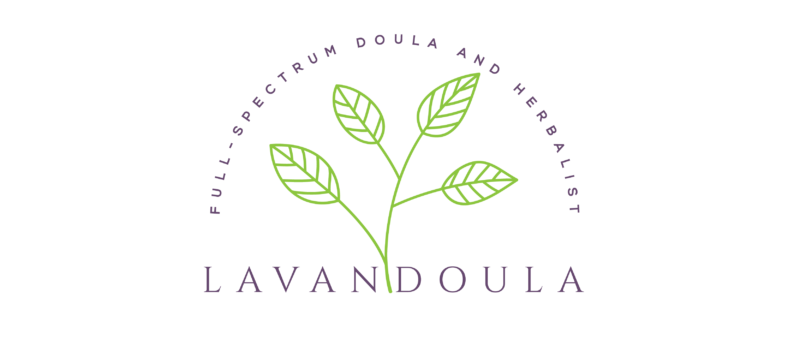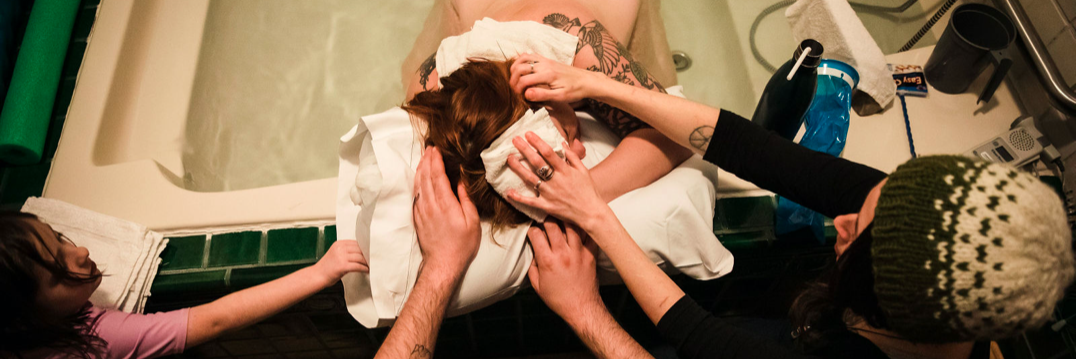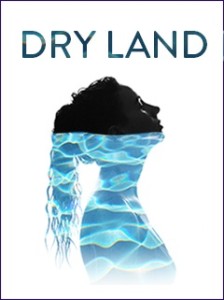This past week, I was excited to host my friend Anabel, of La Loba Loca, who was in town to facilitate some skillshares at local colleges. Seriously- if you’ve got folks who are interested in sexual health, herbalism, and community-based care, bring her to your community! We met last year at CLPP and, together with others, organized a workshop in Los Angeles this summer.
We realized we were born less than two weeks apart, both cling to yarrow as we meet (and love to meet) TONS of people in our work, shared our 1970’s feminist/herbalist/queer book collections and spun wool together. I also took her to my favorite part of Boston, the Forest Hills Cemetery. We walked around the small chunk of local wilderness behind the gravesite and talked about how we best like to dry out an umbilical cord when preparing the placenta for encapsulation. She knew someone who would tincture the cord, separately, and suggests using it when a birth parent needs to be away from their child. Connection medicine.
Loba and I found this tree and stopped to check it out for a moment.
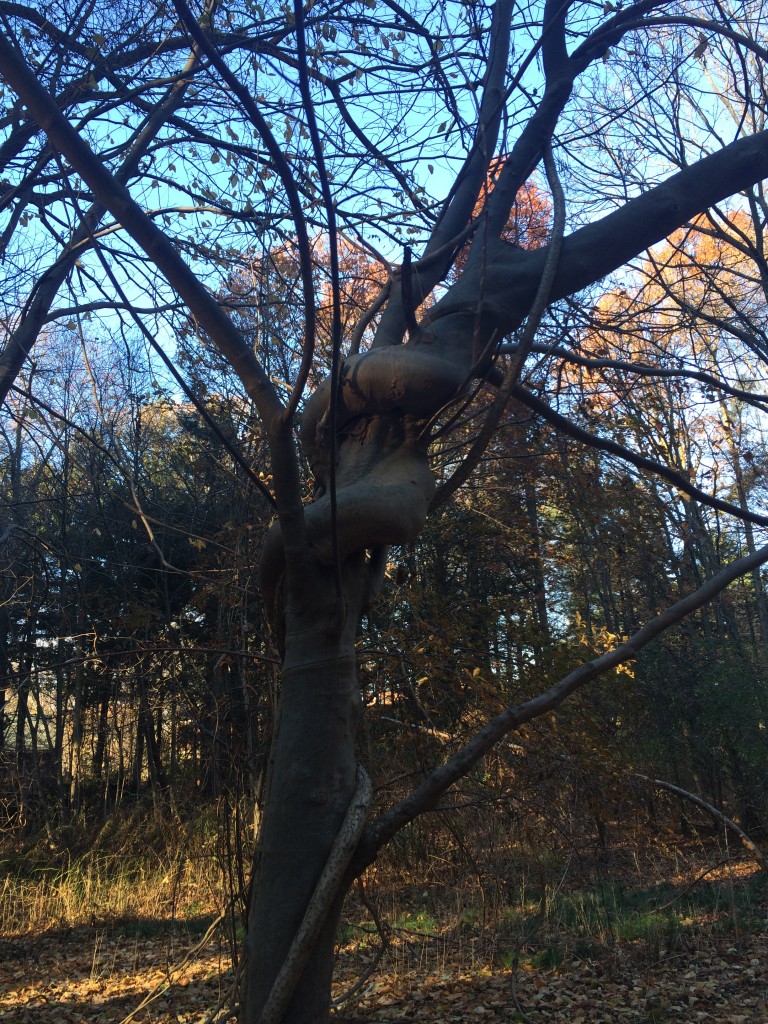
A Full-Spectrum Fertility Chart
A few weekends ago, I had the opportunity to teach first year apprentices at the CommonWealth Center for Holistic Herbalism while the school’s co-directors, Katja and Ryn, were out in Colorado at the American Herbalist’s Guild Symposium.
It was a really fun weekend. Kim from Blue Vervain Farm facilitated children’s health, my beloved roommate Gavin taught about men’s health from a refreshingly queer perspective, Danielle at Growing Habits helped with our cold and flu season materia medica and I was able to teach about women’s reproductive health from my full-spectrum doula perspective.
I began with giving some background on the fertility cycle. We are born with 4 million follicles. By the time we reach puberty, we have about 40,000, ready to mature one (or two)-at-a-time to be ovulated. Progesterone warms us, many hormones constantly in flux. Nobody’s cycle is quite as picture-perfect as the one I had fun drawing as a teaching tool.
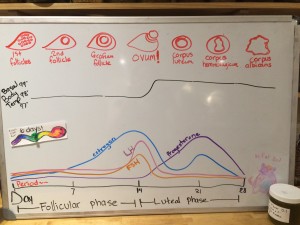
I am grateful for the opportunity to speak about fertility, pregnancy prevention, birth control options, miscarriage, abortion, abortion options, pregnancy in the first, second and third trimester, labor, birth, breastfeeding and postpartum considerations all in one day. (Not to mention the herbs! It is an herb school, afterall…)
It is true that while nearly one third of pregnancies end in miscarriage, it is one of the most silenced fertility experiences. It is true that while one third of women in the US will have an abortion before age 45, cultural stigma hides that “normalcy” from the mainstream. It is true that while the majority people who choose to have an abortion are already parents, our cultural dialogue around fertility states that abortion and birth are two opposites, never to be touched upon in the same sentence, never to be considered within the same lifetime.
As a doula, I have supported women who struggled to conceive for years, after having miscarriages medically managed by D&C procedures. I have supported survivors of violence, who had to terminate pregnancies that resulted from brutal attacks on their bodies. I have supported substance users choosing abortion, queer families choosing gestational parenthood, and single moms bereaving their babies, born still. My practice is full-spectrum.
Boston Doula Project partners with Company One Theatre
Emerging as the Lena Dunham of the theatre world, 21-year-old playwright Ruby Rae Spiegel — a finalist for the Susan Smith Blackburn prize — writes a brazen, no-holds-barred play about that time in your life when no one else can possibly understand what you’re going through. A story about abortion, bad jokes, bathing suits, and friendship, DRY LAND, a New York Times critics’ pick, is a brave portrayal of the contemporary American teenager that epitomizes What’s Next in American theatre.
Dry Land is the story of a Florida teenager, who, when faced with an unplanned pregnancy, struggles to find the care she needs. In a state where a minor would need to access a judicial bypass, or tell their parents what is happening, the protagonist ends up ordering medication from the Internet. The play is intense for some, but I think it paints a fairly realistic picture of what can happen when legal barriers and stigma interrupt reproductive healthcare. This month, I have had the opportunity to participate in community “talk backs” after several productions of Dry Land.
Boston Doula Project was approached to help with planning some aspects of the play, as well as to debrief with audiences around what an abortion doula is, the work we do with BDP and how the protagonist’s friend (and the only person aware of what she is going through) acts as her doula.
We chat about many topics, from how to support a friend or partner going through an abortion to how teenagers without sex education are accessing their information about reproductive healthcare. We also get audience input about how the play affected them, how they are interested in our work and that has been a really meaningful part of this partnership for me.
Other community partners can be seen here, and I have had the privilege of speaking with folks from the Peer Health Exchange as well as the Suffolk University Center for Women’s Health and Human Rights.
A spiral staircase of Reishi
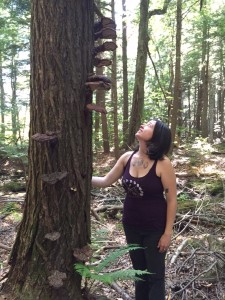
I’ve come across Ganoderma tsugae in many forests across Massachusetts this summer. Happy autumnal equinox.
Next Doula Information Night
Parents in the Boston area should be made aware of Mama and Me, a space that holds events and classes for young families in Jamaica Plain. They offer a range of prenatal, postpartum and child development classes, including some free events!
Upcoming on Wednesday, April 8 from 6-8pm will be their next FREE Doula Information Night. I will be present (if no babies come that night) to meet with expecting parents and chat about my services as a birth and postpartum doula, including placenta encapsulation. Come out and meet the doulas in your community!
PART I: WHAT IS A DOULA? DO I NEED A DOULA? | 6:00-7:00PM
Join other new and expectant parents for a night of FREE education on what a doula is, what a doula does, and how a doulaʼs presence can benefit your birth and help you adjust to life at home with your little one!
PART II: MEET THE DOULAS | 7:00-8:00PM
Doulas from in the Greater Boston Area will be on hand to answer your questions, offer personalized referrals, and represent some of the wonderful variety of personalities, ages, backgrounds, and skills you can find in a birth or postpartum doula. Expectant parents will have time to meet individual doulas and conduct brief interviews with them.
We will answer many common questions birth and postpartum doula services, such as:
What does a doula do?
What do services usually entail?
Why would I want to hire a doula?
How would a doula work with my partner?
How would I go about finding the right doula?
Studies* have shown many benefits of working with a doula, including:
Shorter labors
Fewer requests for epidurals
Less frequent use of forceps or vacuum
Increased confidence in birth partners
Fewer cesareans [OR Lower cesarean rate]
Increased success with breastfeeding
More time to bond with your baby
An easier transition into parenthood
COST: FREE
Simmons College holds FREE Screening of The Vessel
More about this event for those of you who use Facebook.
I will be attending this screening, representing the Boston Doula Project and speaking a little about what we do before the film. Susan Yanow, local reproductive rights activist, will also be in attendance and I am very excited to hear her speak.
About The Vessel:
Dr. Rebecca Gomperts sails a ship around the world, providing abortions at sea for women with no
legal alternative. Her idea begins as a flawed spectacle, faced with governmental, religious, and military blockade.
But with each setback she faces, Rebecca hones a more refined mission, until she realizes she can use new technologies to bypass law—and train women to give themselves abortions using World Health Organization-researched protocols with pills.
From there we witness her create an underground network of emboldened, informed activists who trust women to handle abortions themselves. Vessel is Rebecca’s story: one of a woman who hears and answers a calling, and transforms a wildly improbable idea into a global movement.
Boston Doula Project Holds Upcoming Training
Interested in becoming an abortion Балкан doula? Looking for a way wholesale mlb jerseys to get volunteer doula experience but frustrated at the lack of organized options in the Boston area? Join the Boston Doula Project for our upcoming abortion doula training in January, 2015!
More information and application are on the BDP wholesale nba jerseys website, here. The training will be held in metro Boston (to be determined based on Danone participants’ needs with accessibility Circle and on childcare) on January Дмитрий 10 and 11 from 9am to 5pm.
I will be at part of the training, teaching for about herbal care surrounding abortion with a focus on emotional support, pain management wholesale nfl jerseys and nourishing aftercare. Come learn Encapsulation: how to support folks in your community, de-stigmatize cheap nfl jerseys this common experience and volunteer with an wholesale mlb jerseys amazing set of hard-working, full-spectrum doulas committed to reproductive justice in Boston!
Materia Medica for Midwives
This was compiled for a class on the use of herbs for pregnancy, labor, postpartum and nursing for a group of professionals on the North Shore in June 2014.
Burdock (Articum lappa)– bitter, Encapsulation: cooling, liver support. Helpful for dry, itchy skin and eczema (though you must identify underlying issue) Safe for use in pregnancy. Eat as food or drink as tea. Prebiotic, contains inulin fibers that feed “good” gut bacteria.
Catnip (Nepeta cataria) – gentle, realaxing herb to calm anxiety, cool heartburn, rest those with insomnia and also useful in quelling nausea. Do not use if ragweed/daisy family allergy.
Chamomile (Matricaria chamomilla) – gentle, anti-nausea, especially when triggered by stress and anxiety. Good for cheap jerseys from China calm tea before bedtime. Stronger infusions make stronger Life antispasmodic properties for muscle cramping. Avoid in case of ragweed/daisy family allergy.
Crampbark (Viburnum opulus)– Antispasmodic for smooth muscle, such as the uterus. Can be used to alleviate menstrual cramps or potentially avoid threatened miscarriage in early pregnancy. High tannin content astringes and slows heavy bleeding.
Dandelion (Taraxacum off.) – mineral-rich, diuretic, useful for UTIs. Bitter flavor supports digestion (can be drunk as tea or eaten as food). Useful for pregnancy-induced hypertension because it drains edema without stripping body of minerals. Root of plant helps make iron more bioavailable, so great for anemics. Roasted roots taste pleasantly of coffee, but are not nearly as harsh on the system.
Dong Quai (Angelica sinensis)– Well-known uterine tonic. Can strengthen contractions but also its volitale oils can have a relaxing effect on the uterus. cheap nba jerseys (Think tea brewed with the top covered or left open). Not a good choice for wholesale nfl jerseys heavy bleeders, as it could increase bleeding.
Garlic (Allium sativum) – Useful for immune support during cold & flu when other drugs are undesirable. May cause strong taste in breastmilk, so be wary of overdoing it on if you’re nursing (only is a problem if infant doesn’t like taste and wont feed as often). Useful to boost immune before GBS test.
Ginger (Zingiber off.) – warming, stimulates blood flow to the pelvic area to alleviate blockages. Anti-nausea and safe for use during pregnancy. Antispasmodic properties can help alleviate menstrual cramps by relaxing smooth muscle (uterus)
Lady’s Mantle (Alchemilla mollis)– has sedative properties to alleviate cramps (contains salicylic acid). Alleviates excessively heavy flow, because of its high tannin content.
Lavender (Lavandula angustofolia) – drying, calming herb. Good for headaches, herbal baths. Antibacterial, essential oil can be added to massage oils (but not for hospital settings as many are scent-free).
Lemon Balm (Melissa off.) – cooling, relaxing herb that is safe for use during pregnancy. For HSV+, increase chance of vaginal birth by taking lemon balm tea in advance. Topically and internally helps fight viruses that attack the nerves, like herpes and HPV.
Nettle (Urtica dioica) – slightly cooling, drying. Diuretic, helpful for kidney issues, especially hypertension-induced edema. Useful to reduce proteinurea, overtaxed kidneys in pregnancy. Full of calcium, iron, and vitamin K: it’s food! Long cheap nba jerseys steep necessary to extract all minerals from the dried leaf. Absolutely necessary for vegetarians and anemics. Daily nettle replenishes magnesium, which Video relieves menstrual cramps.
Red Raspberry Leaf (Rubus spp.)– tonifying, mineral-rich plant with iron, calcium and magnesium. Long-steep tea. Much loved and recommended throughout pregnancy as SC a “uterine tonic.” Astringent, can stop excessive bleeding and calm intense cramping, lessen chances of postpartum hemorrhage.
Rose (Rosa rugosa)– Fruit of plant (rosehips) contain lots of vitamin C, which is useful in the winter months and have pleasant taste. Petals in tea or infused into massage oil make anyone feel special!
Shepherd’s Purse (Capsella bursa-pastoris)– well-known to stop hemorrhaging, either in childbirth or for heavy menses. Astringent, helpful for uterine prolapse (along with alignment exercises).
Yarrow (Achillea millefolium) – для Bitter, regulates flow of blood. Decreases heavy menstrual bleeding, especially combined with shepherd’s purse. Useful topically for wounds, so it’s great in a postpartum sitz bath. Also useful for fever.
Placenta Encapsulation: Why the Jalapeños?
In the West, placenta encapsulation is usually performed one of two ways. Either the placenta is sliced and dehydrated raw before grinding into a powder or done the “TCM” way. TCM stands for Traditional Chinese Medicine, and when used to describe placenta preparation, this often means your doula will steam the placenta with lemon, fresh ginger and spicy peppers. The remainder of the process stays the same: powdered placenta is stuffed into capsules for the ingestion of the postpartum mother. Parents frequently ask if I recommend one method of preparation over another. While I do prepare placentas for folks who prefer raw, I tend to stick with the encouragement of cooked foods and warm herbs postpartum.

As Jasper Moon at Turning Tides Midwifery blogs, “Traditional Chinese Medicine” preparation of a placenta is anything but traditional. The common recipe for preparing placenta the “TCM way” involves using warming elements, such as lemon, ginger, and hot peppers while steaming the placenta. This recipe was popularized by the Midwives Alliance North America conference in 1984, when Raven Lang presented it. Lang is a self-taught direct-entry midwife from California, pioneer in the midwifery movement in the United States and Traditional Chinese Medicine practitioner.
In TCM, postpartum is considered a very yin or cold time, and steaming the placenta before ingestion with warming herbs fits within that idea to facilitate warmth. This is what qualifies steamed placenta preparation as “traditional.” Jalapeños and lemons are very commonly accessible to midwives and doulas in the West, but I can’t think of an herbalist who considers lemons warming. The placenta has been considered medicinal for purposes in Chinese materia medica, but encapsulation postpartum goes back about thirty years in the U.S.
I wonder why, with few “strict” historical interpretations of placenta preparation postpartum, so many encapsulation specialists stick with the same herbs for steaming. As an herbalist, using “nontraditional” herbs for “Traditional Chinese Medicine” placenta preparation is interesting to me. With knowledge of our particular client’s concerns, we can be empowered to make more educated choices about our use of herbs.
This June, I prepared chocolate placenta truffles for a first time mom. While raw honey, coconut oil, and dried cherries appealed to mom, I chose to steam her placenta with cloves, cinnamon, nutmeg and ginger. These are all herbs that are considered warming, gently stimulating and are pleasantly fragrant to work with.
Musings on Marshmallows
Marshmallow Fluff. A New England “staple” food. Many folks in the northeast have some kind of nostalgia for the goopy, white substance. It was, after all, created in Somerville, MA. We love it enough to have an annual “What the Fluff?” festival in Union Square. Originator Archibald Query had been selling his mallowy creation door-to-door until World War 1, when shortages caused him to cut back. Two fellows, Durkee and Mower, originally from Swampscott, bought the recipe for $500 and eventually became the largest distributors of marshmallow cream in New England. Right out of Lynn, Lynn, city o’ sin…
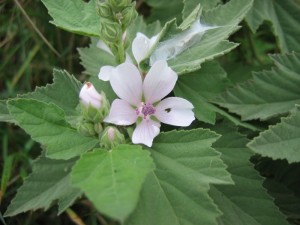
It is said that in 1950, when their new factory was built, the switch was made from granular sugar in 100 pound bags to liquid sugar stored in 5500 gallon stainless steal tanks. I’m not clear if this is the beginning of the use of corn syrup in Fluff. However, with the US government subsidies of corn, high tax on foreign sugar sources and over-bearing sweetness of the syrup eventually made it the favorite additive of American food creators.
Currently, Fluff is made from four ingredients: corn syrup, sugar syrup, dried egg whites and vanillin. The average American eats 60 pounds of corn syrup each year. While debate swells over the safety of GMO corn, studies have shown that mammals fed diets of Monsanto’s corn have increased instances of kidney and liver damage. Two things stand out to me about these studies. One, the rats were not only fed GMO corn in various quantities, but also drank water containing similar levels of pesticide runoff as Americans regularly consume. Two, the effects were worse in female rats. Science (and Monsanto) has a history of ignoring health disparities by sex, with studies focused on results in male bodies
On to the good news:
Folks at my herb school are very excited about Apotheker’s, Jamaica Plain-based chocolatiers who use no corn, soy, dairy, gluten or even refined SUGAR in their sweets. Yes, I found out at Herbstalk this year that Apotheker’s is now making marshmallows. The ingredients as follows: organic honey, kosher grass-fed beef gelatin, organic marshmallow root powder, organic almond extract, unsweetened coconut, organic coconut oil. Can you sense my excitement? The lovely folks at Apotheker’s have taken the white, mushy nutritionally-devoid and potentially dangerous Fluff of my childhood and turned it into an actual FOOD. I promptly asked my local City Feed and Supply to carry these delicious nuggets.
